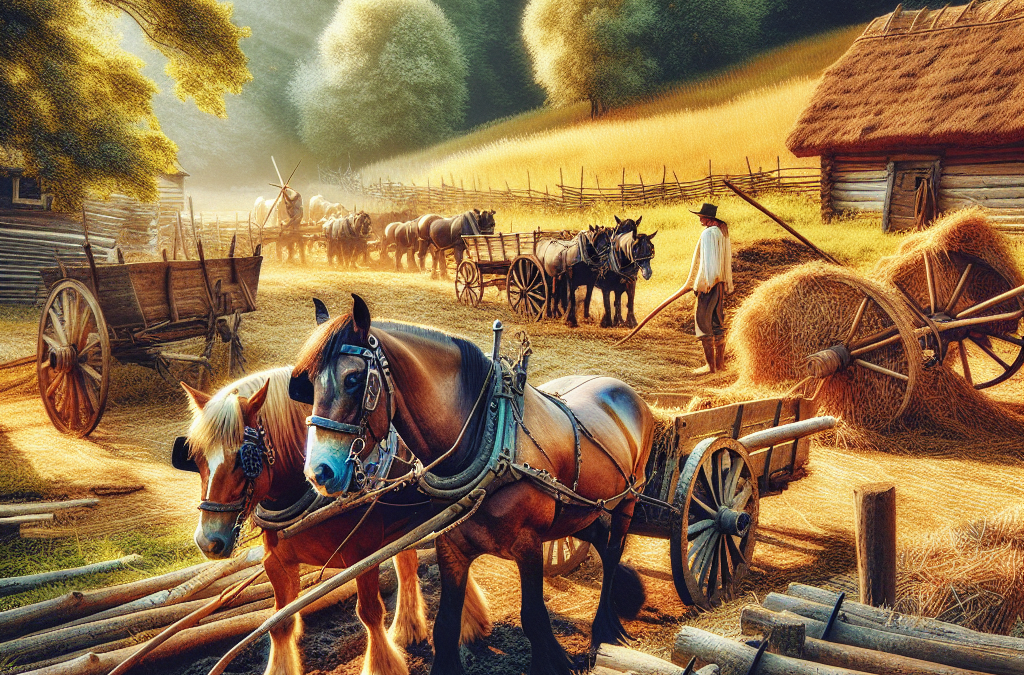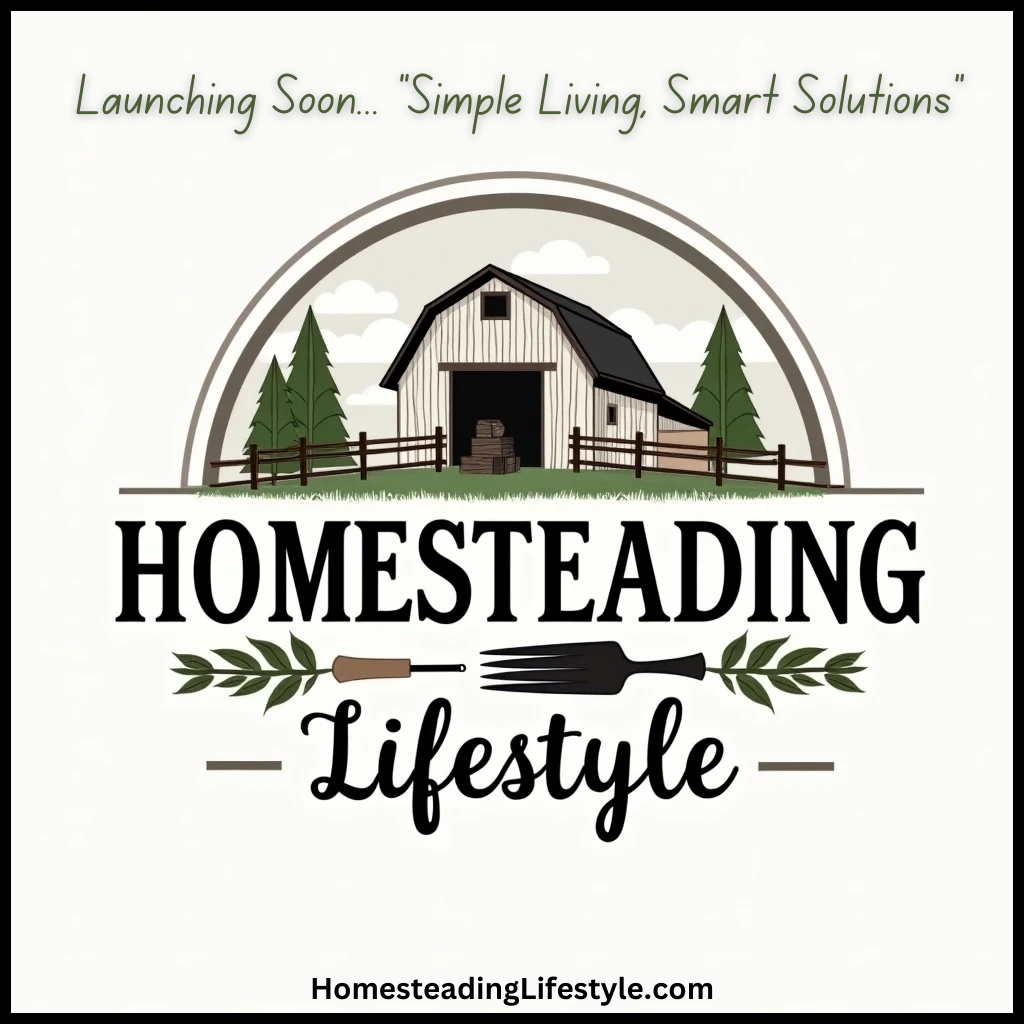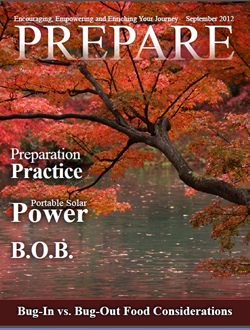Enhanced Work Efficiency
Natural Power for Heavy Tasks
Using draft animals like oxen, horses, or mules has transformed the way I approach heavy work on the homestead. These incredible creatures come with some serious muscle, making tasks like plowing fields or hauling firewood much easier. Instead of relying solely on machinery, which can be expensive and requires maintenance, I’ve found that harnessing the power of draft animals often gets the job done with less hassle.
For instance, the first time I plowed my little garden patch using my beloved mule, I was amazed at how much soil he could turn over in a short amount of time. It was almost magical to see him work! I quickly learned that not only do they work efficiently, but they also do it without the carbon footprint of a gas-guzzling tractor.
Ultimately, having draft animals means using nature to its advantage. It’s a bit like hitting the reset button on our agricultural practices and getting back to the basics of sustainable living.
Cost-Effective Farming Solutions
When I consider expenses related to homesteading, draft animals have become a cornerstone of cost-effective solutions. With rising fuel costs, relying on draft animals for transportation and farming tasks can considerably lower overhead. Not only am I avoiding hefty fuel bills, but I’m also cutting down on repair costs associated with mechanical equipment.
Moreover, draft animals can often be fed using what I have on hand—like garden scraps and forage from my land. This aspect makes them a sustainable choice for farming locally. It’s rewarding to see how reducing these operating costs gives me more freedom to invest in other areas, like expanding my vegetable garden or raising chickens!
Another perk? Draft animals can also provide organic fertilizer through manure, which enriches my soil naturally. I’ve turned this byproduct into nourishment for my plants, positively impacting my crop yield without the need for synthetic fertilizers.
Promoting Sustainable Practices
One of the biggest lessons I’ve learned is that using draft animals encourages a more sustainable lifestyle. Instead of relying on fossil fuels and machinery, working with animals promotes eco-friendly practices. From pasture rotation to manure management, I find myself engaging more with the land and its natural cycles.
This hands-on approach reminds me that I am part of a larger ecosystem. It’s this interconnectedness that makes homesteading such a rewarding experience. The healthier the soil and the livestock, the more productive my land becomes. It’s a win-win, really!
Additionally, draft animals are often raised in a manner that allows them to coexist with the land and other farm animals, creating a balanced system. This promotes biodiversity and contributes to a healthier environment drop by drop and plow by plow.
Nurturing a Deeper Bond with Animals
Animal-Human Connection
I cannot stress enough how important it is to connect with the animals on your homestead. Using draft animals has allowed me to forge a deeper relationship with them. These aren’t just tools; they have personalities, preferences, and quirks, just like you and me!
Spending time with my draft animals has been a joy—each interaction teaches me something new. Whether it’s figuring out how to lead my horse with just a whisper or understanding my mule’s pace, these experiences are incredibly enriching. It reinforces the idea that we’re a team working toward a common goal.
This relationship is not just beneficial for me; I’ve noticed that the animals seem happier and more engaged when they sense my positive energy. Together, we build trust and learn from each other daily. It’s truly a rewarding partnership!
Understanding Animal Care and Management
Caring for draft animals means learning a great deal about animal husbandry. I’ve had to research their nutritional needs, health practices, and proper training techniques. Initially, I felt overwhelmed, but over time I learned to appreciate the responsibility that comes with caring for these magnificent creatures.
Managing draft animals has taught me how to recognize signs of discomfort or illness. I’ve become more self-sufficient in terms of veterinary care and prevention. It’s rewarding to know that I’m providing not just a home but a healthy and happy life for my animals.
Plus, this bond has instilled a sense of responsibility in my whole family. My kids are now involved in daily routines, which helps them understand the value of hard work and compassion for animals. In a world where technology often isolates us, this is a beautiful lesson in connection.
Learning Traditional Skills
The experience of using draft animals has opened the door to a treasure trove of traditional skills that might have otherwise been forgotten. From plowing fields the old-fashioned way to learning how to harness and drive my animals, it’s been a bit of a journey through history.
I’ve enjoyed exploring methods of animal husbandry used by generations before us, from building sturdy shelter for my draft animals to ensuring they receive gentle but assertive training. These skills aren’t just practical—they’re also incredibly fulfilling. They root me in a tradition that honors the hard work and ingenuity of those who came before me.
Each new skill I learn further connects me to my homestead and gives me resources to share with others in my community. It’s a gratifying experience to teach someone else how to hook up a plow, bringing back a skill that has long been overshadowed by modern machinery.
Strengthening Community Connections
Shared Resources and Knowledge
Now that I’ve been using draft animals for a while, the community aspect has blossomed in ways I never anticipated. Sharing resources, like tools and knowledge, has become a cornerstone of my local connections. More homesteaders are starting to realize the benefits of draft animals, and it’s exciting to watch our community grow.
We often host workshops to teach others about how to effectively use and care for draft animals. Sharing what I’ve learned has brought us closer together as we swap tips or lend a hand to one another when we need help. It’s amazing how a simple conversation about a cart wheel turns into a collaborative project that strengthens community bonds.
Being part of a vibrant homesteading community also means I have folks to rely on in times of need. It becomes a two-way street—sharing my draft animals when someone needs a hand in their garden, and they do the same for me. This support system is priceless!
Building Trust and Cooperation
Having draft animals on my homestead has reinforced the importance of trust and cooperation, not just with the animals but within my community. Working together on projects, whether it’s getting up a group to help each other with harvests or rescuing an animal in distress, has forged solid bonds between neighbors.
These experiences build resilience; we’re not just living side by side, but we’re in it together. The camaraderie that comes from shared hard work is hard to replicate anywhere else! It extends our safety net when challenges arise, reminding us that we aren’t alone in this journey.
It’s like we’re rediscovering the power of collaboration, as I share my strengths with someone else, and they share theirs with me. That mutual support enhances not just our homesteads, but our lives.
Encouraging Local Economies
Utilizing draft animals has also inspired an interest in expanding local economies. The more I showcase what my draft animals can accomplish, the more my community becomes interested in investing in similar practices. It feels good to be part of something that encourages more people to adopt a homesteading mindset.
Here’s the cool part: when we’re using draft animals in our local farming operations, more people are inclined to buy from local sources. This boosts not just our homesteads but the community at large. We’re supporting one another in meaningful ways. Farmers’ markets, crafts fairs, and local food channels thrive when we commit to using traditional skills and methods.
When folks support local businesses, it creates a ripple effect that nurtures our local ecosystem, enhancing both our nutrition and our economy. It’s a remarkable realization that every time we choose to use draft animals, we’re investing in our community’s future!
Conclusion
So there you have it—the many benefits of incorporating draft animals into your homesteading life! From enhancing efficiency and reducing costs to fostering deeper community connections, the journey has been nothing short of enriching. Whether you’re a seasoned farmer or just starting, I encourage you to explore this timeless practice of working with animals. Not only will you see the benefits on the homestead, but you’ll likely find a more profound connection to the natural world around us.
Frequently Asked Questions
1. What types of draft animals are best for homesteading?
Typically, oxen, horses, mules, and donkeys are the most common draft animals. Each type brings unique strengths depending on your needs—like weight capacity and temperament.
2. Are draft animals easy to care for?
While they do require daily care and knowledge about animal husbandry, the connection you build with them can make the effort incredibly rewarding!
3. Can I use draft animals for all my farming tasks?
Draft animals excel at certain tasks like plowing and hauling, but you might still need modern tools or machinery for some specialized jobs.
4. How do draft animals compare in cost to tractors or machinery?
While initial investment for draft animals can be lower, you must consider feeding, shelter, and veterinary care in the long run, which can be quite manageable compared to ongoing machine maintenance.
5. What skills do I need to successfully use draft animals?
Understanding basic animal care, training techniques, and how to operate their gear will go a long way. Plus, don’t forget that hands-on experience counts just as much!





